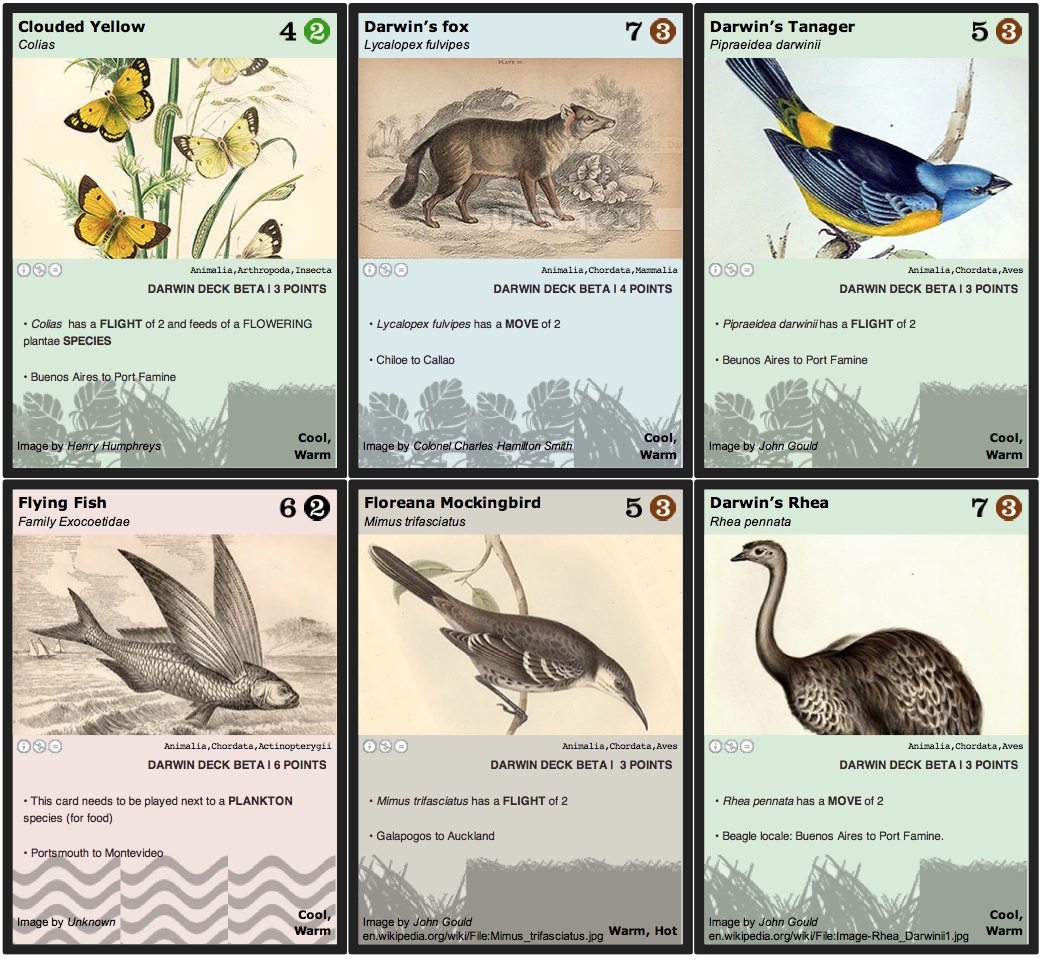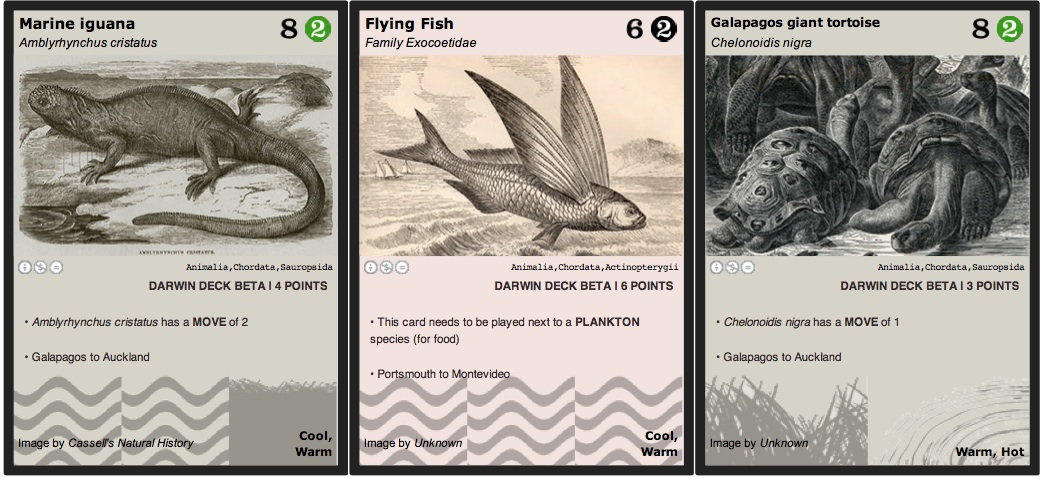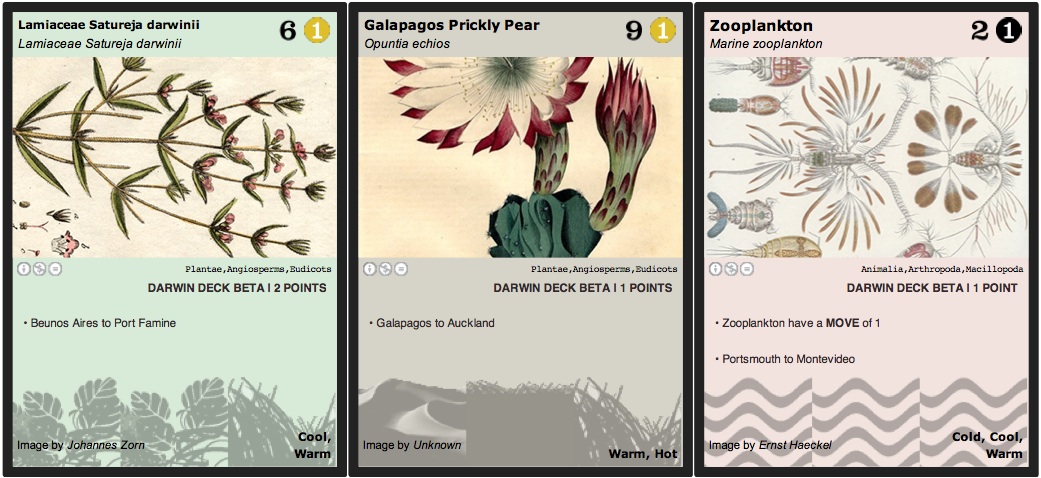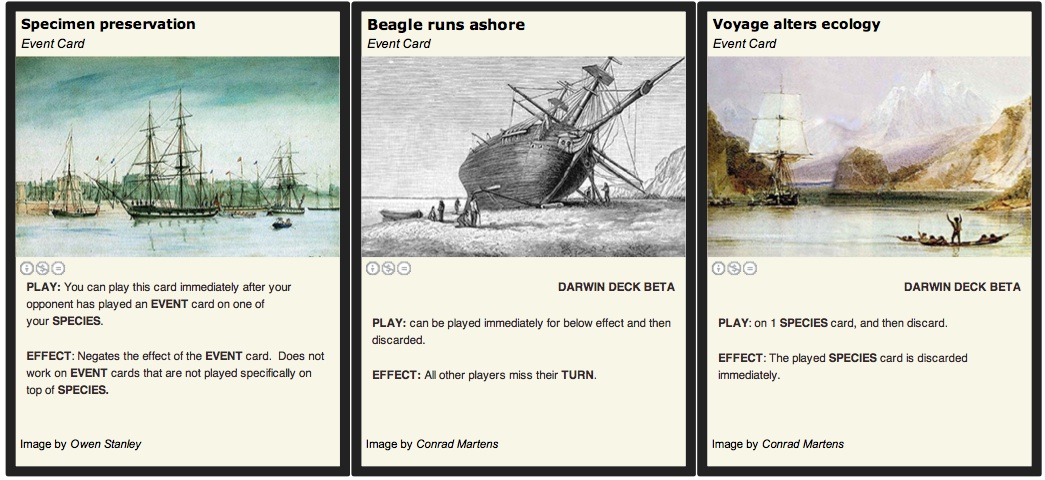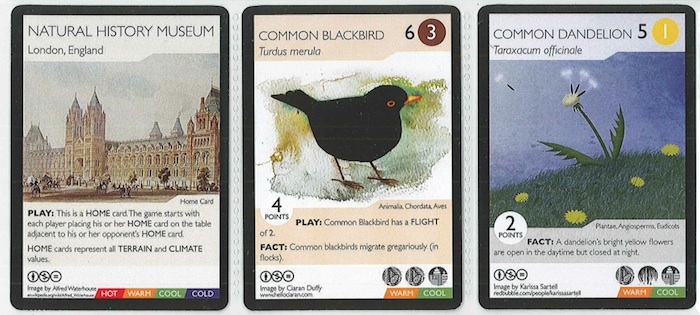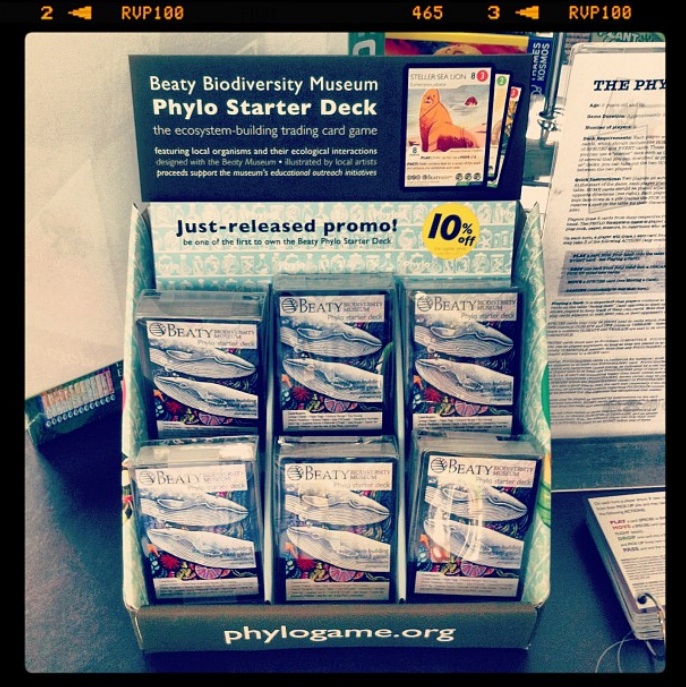

| Museum Deck | Museum Homepage | Get More Cards | How To Play
(* in progress) – see this post for details.
RELEASE DATE: May 30, 2012
NOTES: The Beaty Deck…
SAMPLE CARDS:
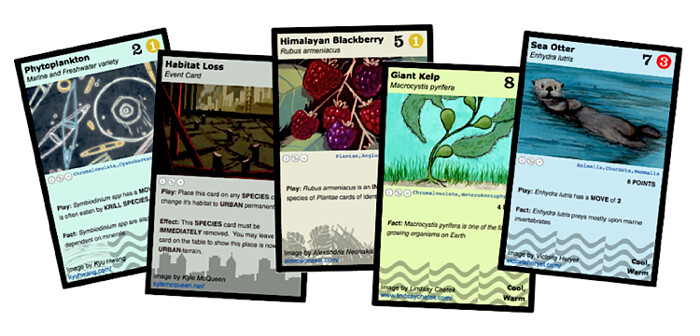
LOCATION DETAILS: Beaty Biodiversity Centre, University of British Columbia, 2212 Main Mall, Vancouver, B.C. (google map)
DESCRIPTION:
The Beaty Biodiversity Museum is a natural history museum in Vancouver, British Columbia, Canada. Its collections include over two million specimens, including a 25-metre skeleton of a female blue whale buried in Tignish, Prince Edward Island. The Beaty Biodiversity Museum and the Biodiversity Research Centre are located in the Beaty Biodiversity Centre, University of British Columbia, 2212 Main Mall, Vancouver.(From Wikipedia, 30 May 2012)
DETAILED CARD LIST:
Black Bear | Ursus americanus | card
Blue Whale | Balaenoptera musculus | card
Clark’s Nutcracker | Nucifraga columbiana | card
Climate Change | Event | card
Dragonfly | Anisoptera infraorder | card
Earthworm | Lumbricus terrestris | card
European Honeybee | Apis mellifera | card
Giant Kelp | Macrocystis pyrifera | card
Habitat Loss | Event | card
Himalayan Blackberry | Rubus armeniacus | card
Human | Homo sapiens | card?Isothecium cristatum (Moss) | Isothecium cristatum | card
Killer Whale | Orcinus orca | card
Marbled Murrelet | Brachyramphus marmoratus | card
Mosquito | Culicinae subfamily | card
Moss Mite | Oribatida order | card
Mycorrhizal Fungi | Oidiodendron | card
Oil Spill | Event | card
Pacific Krill | Euphausia pacifica | card
Polluters | Event Card | card
Phytoplankton | Marine and Freshwater variety | card
Purple Sea Urchin | Strongylocentrotus purpuratus | card
Salal | Gaultheria shallon | card
Sea Otter | Enhydra lutris | card
Sockeye Salmon | Oncorhynchus nerka | card
Species Protection | Event | card
Steller Sea Lion | Eumetopias jubatus | card?The Green Party | Event | card
Three-spined Stickleback | Gasterosteus aculeatus | card
Whitebark Pine | Pinus albicaulis | card
Wildfire | Event | card
Zooplankton | Copepoda subclass | card
ADDITIONAL MATERIALS:
Artist: Alexandria Neonakis | link
– Himalayan Blackberry – Rubus armeniacus
– Stellar Sea Lion – Eumetopias jubatus
– Stickleback – Gasterosteus aculeatus aculeatus
– Human – Homo Sapiens
– Wildfire – Event Card
Artist: Lindsay Chetek | link
– giant kelp – Macrocystis pyrifera
– Clark’s Nutcracker – Nucifraga columbiana
– Black Bear – Ursus americanus
– Purple Sea Urchin – Strongylocentrotus purpuratus
– Climate Change (Warming Trend) – Event card
Artist: Victoria Heryet | link
– krill (pacific) – Euphausia pacifica
– white bark pine – Pinus albicaulis
– moss – Isothecium cristatum
– marbled murelet – Brachyramphus marmoratus
– sea otter – Enhydra lutris
Artist: Kyu Hwang | link
– Phytoplankton (marine and freshwater) – assortment petri plate picture
– Killer Whale – Orcinus orca
– Mosquito – (specific species TBD)
– Earthworm – Lumbricus terrestris
– Oil Spill (preferably an image for both land and water) – Event card
Artist: Brandy Masch | link
– Salmon – Sockeye or Coho (TBD)
– Dragonfly – (specific species TBD)
– Blue Whale – Balaenoptera musculus
– Zoo Plankton – Copepoda
– Species Protection – Event Card
Artist: Kyle McQueen | link
– Salal – Gaultheria shallon
– European Honeybee – Apis mellifera
– Mite – Oribatida
– Mycorrhea – Oidiodendron -fungal cells associating with the roots, plus smaller graphic of a fruiting body
– Habitat Loss (Development) – Event Card
Banner photo modified from this image. Photographer: Artiom Shostak.
edCanvas = document.getElementById(‘content’);
